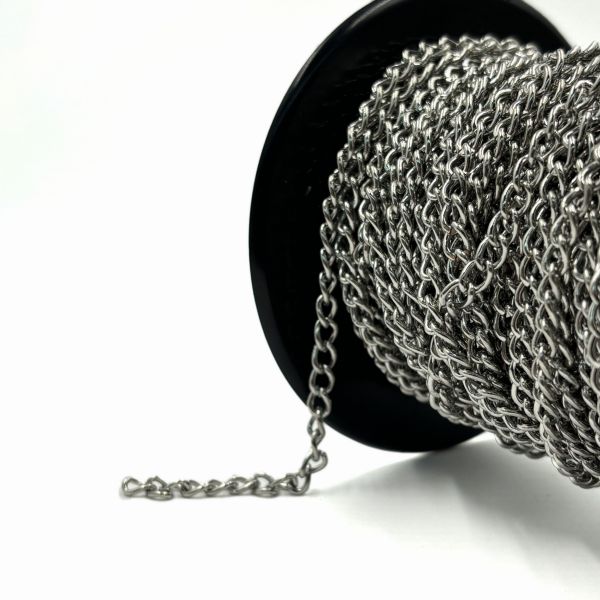Exploring the Intricate World of Plastic Chain Production and its Environmental Impact

What appears to be a simple plastic chain, perhaps an everyday item found in a toy, the luggage you just checked or your local supermarket cart, has a surprisingly complex supply chain and an environmental footprint of considerable concern. From raw material to disposal, understanding this complex system is important in assessing its impact and in finding pathways toward a sustainable future. Such a detailed investigation stems out to explore the intricacies involved in the plastic chain manufacturing process and its detrimental impact on our environment, and the immense price tag attached to such a seemingly simple product. The Raw Materials: Petrochemicals to Polymer
Any plastic has to start somewhere, and, for the most part, that somewhere is the extracting of fossil fuels such as petroleum and natural gas. These are non-renewable resources, and they get refined into a variety of different petrochemicals – the building blocks for plastics. Such activities, already contributing massively to emissions in this first phase of the process, link up with a factor that is subsequently going to worsen climate change. In addition, extraction, transportation, and refining of these resources require huge amounts of energy which represents an additional environmental burden.
Certain petrochemicals, including ethylene and propylene, serve as the building blocks for polyethylene (PE) and polypropylene (PP) which are the most widely used plastics in strap manufacturing. The polymer you use affects the properties of the chain – its flexibility, strength, and stability against chemical and environmental effects. But no matter what the polymer is, the most prominent environmental issue is fossil fuels.
Manufacturing is a chain reaction of events
Converting petrochemicals into plastic polymers requires multiple steps and a complex apparatus with carefully regulated conditions. That polymer selected is melted and forced through a die to produce molecules of plastic in the exact same shape as the chain link will ultimately be. It is highly energy intensive, thus emitting greenhouse gases, as well as air pollution.
Once the plastic is extruded the strands are sent through a cooling solution to help set the plastic into link form. If a more complex design of chain links or a larger chain is required, it may be necessary to use additional processes, like injection molding or rotational molding. This adds more steps that cause more energy use and more waste.
The individual links are linked to one another mercilessly or via heat fusion and thus a continuous chain is formed. QC is exercised at every stage of manufacturing to offer a durable and quality product. Nevertheless, these controls cannot prevent all plastic waste and byproducts from being generated by manufacturing.
Cradle-to-grave Environmental Effects
The environmental consequences of plastic chains go well beyond the production stage. This also includes the extraction of raw materials, which is a key factor in habitat destruction and pollution. Releases greenhouse gases, air and water pollutants, and waste through manufacturing processes. Transporting raw materials and finished products requires energy, and creates emissions, too.
A permanent fixture — a trait we often associate with a good thing — plastic chains are a major environmental crisis. Lasts for hundreds, even thousands of years in the environment, as these chains are very resistant to degradation. This adds to the plastic pollution in landfills and oceans, putting wildlife and ecosystems at risk.
Another major issue is their disposal of plastic chains. Plastic chains are notoriously difficult and inefficient to recycle, thanks to their makeup and the complexity of removing them from other landfill/sea debris. Its byproduct is mostly air pollution, but it reduces the volume of landfill space. Thus, this gives rise to an environmental issue regarding the disposal of plastic chains at the end of a lifetime.
Sustainable Solutions and Preventative Approaches
A multi-pronged approach was needed as all 3 plastic chain production emissions were burning issues. First, it is important to ensure that manufacturing processes use as little energy as possible while also switching to renewables. It is important to divert waste away from landfills and the ocean will develop recycling technologies that are more efficient for plastic chains.
Biodegradable or compostable options instead of regular plastics are an alternative that deserves further exploration to be on the path to a more sustainable future. Bioplastics, materials produced from renewable sources, are in the works and may fill the role for some uses. Yet, more work is required before these alternatives are scalable and please the price point.
Encouraging sustainable consumption and disposal practices, such as extended producer responsibility programs, may also help. The environmental impacts should be lessened by encouraging consumers to repair or reuse plastic chains prior to disposal, and by improving waste sorting infrastructure and collection and recycling coverage. In conclusion, there is no possible way in which one strategy will thoroughly address the multi-layered dilemma of how plastic chain production creates environmental ramifications, and that a careful, holistic approach that melds innovation, the right policies , and consumer awareness will be required to undo the damage.
Final Thoughts: A More Sustainable Blockchain
Plastic chain production involves a complicated series of events that range from resource extraction and manufacturing to environmental effects. The processes that bring fossil fuels into the market contaminate the environment and society, with impacts from extraction until product disposal. However developing innovation in materials science, increasing manufacturing efficiency, and making effective waste management programs will help us to a greener future in a time of plastic chain products in particular.



